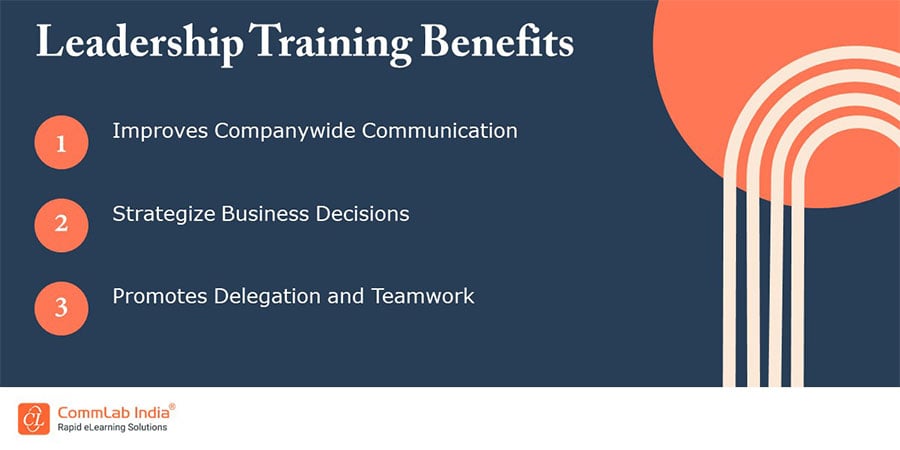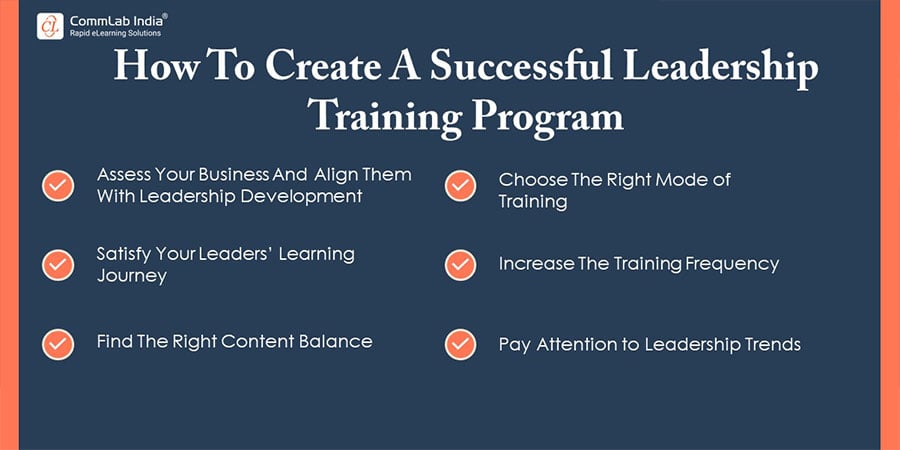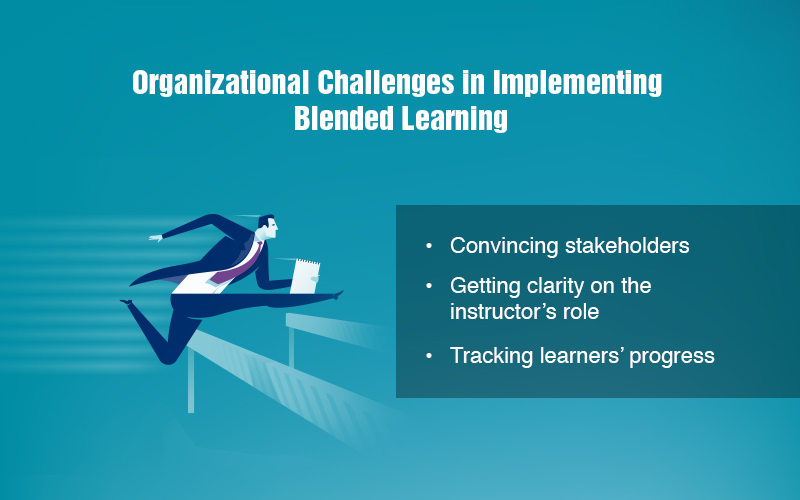Leadership Training – How Can Organizations Get The Best Out of It Through Blended Learning?

To rule out the obvious first, leadership training is important because great leadership is important. Period.
In today’s constantly evolving business market, organizations need to adapt and keep up with industry trends. Similarly, the organization’s leadership must understand the shifting terrain and ensure that their teams understand the same. Thus, organizations need to deliver effective leadership development programs to prepare and equip their leaders with the necessary understanding of business expectations and impart the same to their teams But how do organizations facilitate leadership training? The answer is blended learning.
Because of their busy schedule, the leadership team cannot be expected to sit for an exhaustive training session. Blended learning approach offers a blended platter of various self-paced training formats that facilitates effective training and help learners apply the same in their roles effectively.
→ Download Checklist- Is Blended Learning Right For You?
Looking To Build A Successful Leadership Training Program?
Follow these practices to apply blended learning in your leadership training program-
- Use microlearning to offer just-in-time information
- Facilitate practical learning through case studies and scenario-based learning
- Use VILT to foster peer-to-peer learning and social learning
A leadership team is built through experience and a range of skills including training, coaching and mentoring. A strong leadership team is always an asset to the organization and can help you achieve the desired business results. Hence, organizations must invest in leadership training through blended learning for a powerful impact on their business goals.
Why Is Leadership Training Important?

Leadership training holds umpteen benefits for your organization. Here are some key benefits laid down for you-
Boost Employee Performance And Productivity
A powerful leadership training program enhances the knowledge of the employees and helps them apply the same in their jobs. Further, it also gives them the right direction to move in their work. This leads to fewer distractions and misconceptions, thereby increasing their performance and productivity.
Improves Companywide Communication
Training the leaders of the company will lead to a trickle-down effect and pass on the correct information to all the team members. Since any change starts from the top of the ladder, it is imperative to train the leadership team and ensure they train their respective teams. With this, organizations can improve their overall communication in a simplified manner.
Improves And Strategizes Business Decisions
Quality leadership training develops a growth mindset in employees and they can better align themselves with the organization and its goals. With a clear understanding of the business goals, leaders can strategize and make smarter decisions for the business and set a positive growth curve for the organization.
Promotes Delegation And Teamwork
Leadership development trains company leaders to delegate jobs adequately and promotes teamwork. This creates an environment of inclusivity among the teams and encourages them to take ownership of their work. This leads to better time management and lesser workload, thereby saving valuable time and resources for the business.
Now that we have established the reasons to facilitate leadership training in any organization, let’s explore how to develop a successful leadership training program that can create a significant impact.
How To Create A Successful Leadership Training Program Using Blended Learning

Great leadership requires effective training. Organizations must follow these six best practices for building a successful leadership training program.
Assess Your Business And Align Them With Leadership Development
Mapping out your leadership training program starts with an understanding of your business- where you stand and where you intend to reach! Consider your strengths, weaknesses, and challenges, and then identify areas of improvement through leadership training. Reviewing your organizational priorities and determining what skills your leaders need to accomplish that, is imperative for the success of a leadership training program. A clear vision of how the program will support your company’s roadmap is necessary for your employees as they are always expected to reach those goals.
Satisfy Your Leaders’ Learning Journey
Planning a leadership training program can be complex because you need to maintain a fine balance between core leadership competencies like decision-making, critical thinking, teamwork, and problem-solving; and organizational requirements like stakeholder relations, cross-culture communications, software training, etc. A training mix of mobile learning and Visual Instructor-Led Training (VILT) can foster collaboration and enable peer-to-peer learning for the company leaders. Thus, when you cater to both the core skills and current business goals, you are close to satisfying your leadership team and equipping them with the right skills.
Find The Right Content Balance
With new things coming up every day, organizations need to create a fine balance between practical training, soft skills training, experiential training and theoretical training. You need to devise a systematic plan and divide time for different types of training. You need to find the right content balance considering your company’s requirements, focusing on the skills and training that need the most attention. Most companies and training managers focus on developing the soft skills of their employees because it goes beyond regular work requirements and establishes new behavioral patterns that can be used in the long run.
For example, if you want to impart soft skills training for improved decision-making among employees, using Visual Instructor-Led Training (VILT) and scenario-based learning can provide excellent results. If you want to update your leaders with the latest product features and offerings, you can resort to microlearning and develop short and interesting training modules using videos or podcasts.
Choose The Right Mode of Training
In today’s fast-moving digital world, training can be blended into various formats- microlearning, mobile learning, VILT, etc. With so many training forms to choose from, L&D professionals need to consider the best modality that will suit their employees. No one approach fits all, hence, organizations need to identify the kind of learning they want to provide to their employees. A software training session can work best using ILT or simulations, but compliance training would work best using a microlearning approach.
Increase The Training Frequency
Another thing to keep in mind while developing a leadership training program is the frequency of the training. Like any other training, leadership training also needs to become a part of their job role. While business leaders are always occupied with a lot of work, it is still important for them to spare some time for learning and development. Short and frequent training sessions using a blended learning approach can yield more results than cramming the learnings of the whole year into a two-day session. Further, frequent training sessions will also improve the learning and retention of the employees, thereby leading to better job performance and productivity. You can plan to deliver the learning program over a period of time using a judicious mix of short eLearning modules, bite-sized microlearning lessons, and a few classroom sessions to ensure fruitful training.
Pay Attention to Leadership Trends
Leadership development programs would give the best results if they are adequately able to prepare employees for the future. With changing business dynamics, you need to constantly embrace and keep up with the latest leadership and industry trends. As company leaders are usually up to date with the changes, they don’t need exhaustive learning programs, instead, short courses would suffice for them. Considering their experience and expertise, it is not a good idea to train them with basics or expect them to attend lengthy comprehensive training programs. So, the learning program needs to be designed in an interesting and engaging manner that can advance their ability to think strategically and systematically even in complex situations. Scenario-based eLearning courses, online discussion forums, and microlearning modules are some of the formats recommended to design an impactful training program.
Watch this video to explore more on the power of leadership training and how to build effective learning strategies to leverage the same.
Following these practices will help you overcome corporate leadership training challenges and aid in creating an impactful training program that can benefit the organization in many ways.
Parting Thoughts
It is very well justified that a strong leadership team is an asset to the organization and plays an important role in its success. While it is essential to develop effective training programs for them, they don’t need any rigorous courses that eat away at their valuable time. A combination of various learning formats can provide the necessary information and upskill them to improve business performance and grow their innate leadership skills.
Still wondering whether blended learning is the right approach for your organization’s leadership development, get your hands on this comprehensive checklist to know more!





